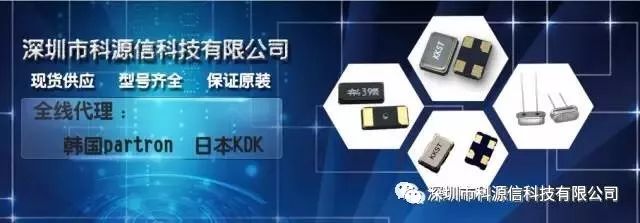
1、Passive Crystals——Passive crystals require an oscillator within the DSP chip, with recommended connection methods provided in the datasheet. Passive crystals do not have voltage issues; the signal level is variable, meaning it is determined by the oscillation circuit. The same crystal can be used for various voltage requirements, making it suitable for DSPs with different clock signal voltage requirements, and they are usually cheaper. Therefore, for general applications, it is recommended to use crystals if conditions permit, especially for manufacturers with a rich product line and large production volumes. The drawback of passive crystals compared to oscillators is that the signal quality is poorer, often requiring precise matching of peripheral circuits (for signal matching capacitors, inductors, resistors, etc.). When replacing crystals of different frequencies, corresponding adjustments to the surrounding configuration circuits are necessary. It is recommended to use high-precision quartz crystals and avoid using low-precision ceramics.
2、Active Oscillators——Active oscillators do not require the internal oscillator of the DSP, offer better signal quality, are more stable, and have a relatively simple connection method (mainly ensuring power supply filtering, typically using a PI-type filter network composed of a capacitor and an inductor, and a small resistor to filter the output signal). The typical connection for active oscillators is: pin 1 is left floating, pin 2 is grounded, pin 3 is the output, and pin 4 is connected to voltage. The drawback of active oscillators compared to passive crystals is that their signal level is fixed, necessitating careful selection of the appropriate output level, leading to less flexibility and a higher cost. For applications sensitive to timing requirements, I personally believe that active oscillators are better because one can select more precise oscillators, even high-end temperature-compensated oscillators. Some DSPs do not have an oscillation circuit internally and can only use active oscillators, such as TI’s 6000 series. Active oscillators are typically larger than passive crystals, but many are now surface-mounted, with sizes comparable to crystals, and some are even smaller than many crystals. A few points to note: 1、DSPs requiring frequency multiplication need to properly configure the surrounding PLL circuits, mainly for isolation and filtering; 2、Crystals and oscillators below 20MHz are essentially fundamental frequency devices, with good stability, while those above 20MHz are mostly harmonics (like third harmonic, fifth harmonic, etc.), with poorer stability. Therefore, it is strongly recommended to use low-frequency devices, as the surrounding configuration needed for PLL circuits for frequency multiplication mainly involves capacitors, resistors, and inductors, which are far superior in stability and price compared to crystal oscillator devices; 3、Clock signal trace lengths should be kept as short as possible, trace widths as wide as possible, and spacing from other printed lines as large as possible, closely following the layout of the devices. If necessary, traces can run on inner layers and be surrounded by ground lines; 4、When introducing clock signals from external sources through backplanes, special design requirements must be followed, and detailed reference to relevant materials is necessary. Additionally, some explanations: Overall, the stability of oscillators is better than that of crystals, especially in precision measurement fields, where high-end oscillators are predominantly used. This allows for the integration of various compensation technologies, reducing design complexity. Imagine if crystals are used and one has to design waveform shaping, anti-interference, and temperature compensation; what would the design complexity look like? In our design of RF circuits that require high clock precision, we use high-precision temperature-compensated oscillators, which can cost several hundred yuan each at the industrial grade. In special application fields, if suitable oscillators cannot be found, meaning the design complexity exceeds the level of commercially available oscillators, one must design their own, in which case crystals must be selected. However, these crystals are certainly not ordinary market crystals but rather special high-end crystals, such as ruby crystals, etc. In fields with higher requirements, situations are even more specific. In our high-precision testing, the clocks we use are even provided by atomic clocks or rubidium clocks, connected through specialized RF connectors, and constitute large, heavy equipment.
Click「Official Account」 to check the recent stock updates from crystal expert KKST and get important information and related datasheets daily!
Click「Video Account」 to get real-time updates on inventory and pricing!

 All articles, images, audio, video files, and other materials are copyrighted by their respective owners.
All articles, images, audio, video files, and other materials are copyrighted by their respective owners.


 All articles, images, audio, video files, and other materials are copyrighted by their respective owners.
All articles, images, audio, video files, and other materials are copyrighted by their respective owners.

 All articles, images, audio, video files, and other materials are copyrighted by their respective owners.
All articles, images, audio, video files, and other materials are copyrighted by their respective owners.